
| Theme: Clinical Engineering | |||
 |
||||||
| Challenges in using ventricular assist device |
 |
|||||
|
||||||
Heart failure or congestive heart failure (CHF):
is a disease characterized by the inability of the heart to supply sufficient blood flow and nutrients to meet the body’s metabolic demands. Over the last decade, this disease has been associated with a significant population worldwide [1, 2]. In the United States, there are approximately 5.3 million people with HF condition, yet less than 0.05% receive heart transplants annually [3]. Similarly, in Australia, the annual prevalence of heart failure is approximately 2% of the population [4]. The continuous intravenous inotropic support is used as a short-term treatment that may improve symptoms and worsen mortality. This makes the patients to deny the inotropic therapy as survival rates after a year is only 10% to 30% [5].
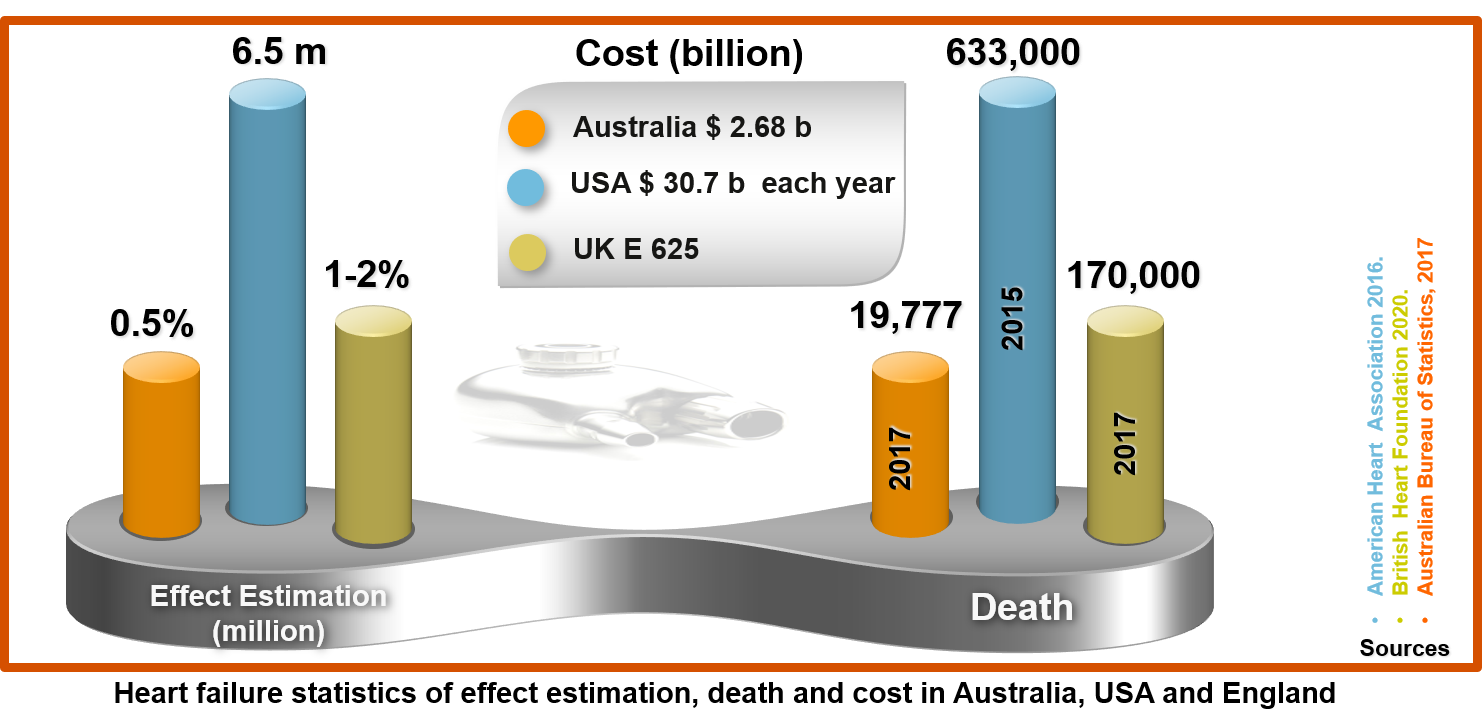
LVAD Current development:
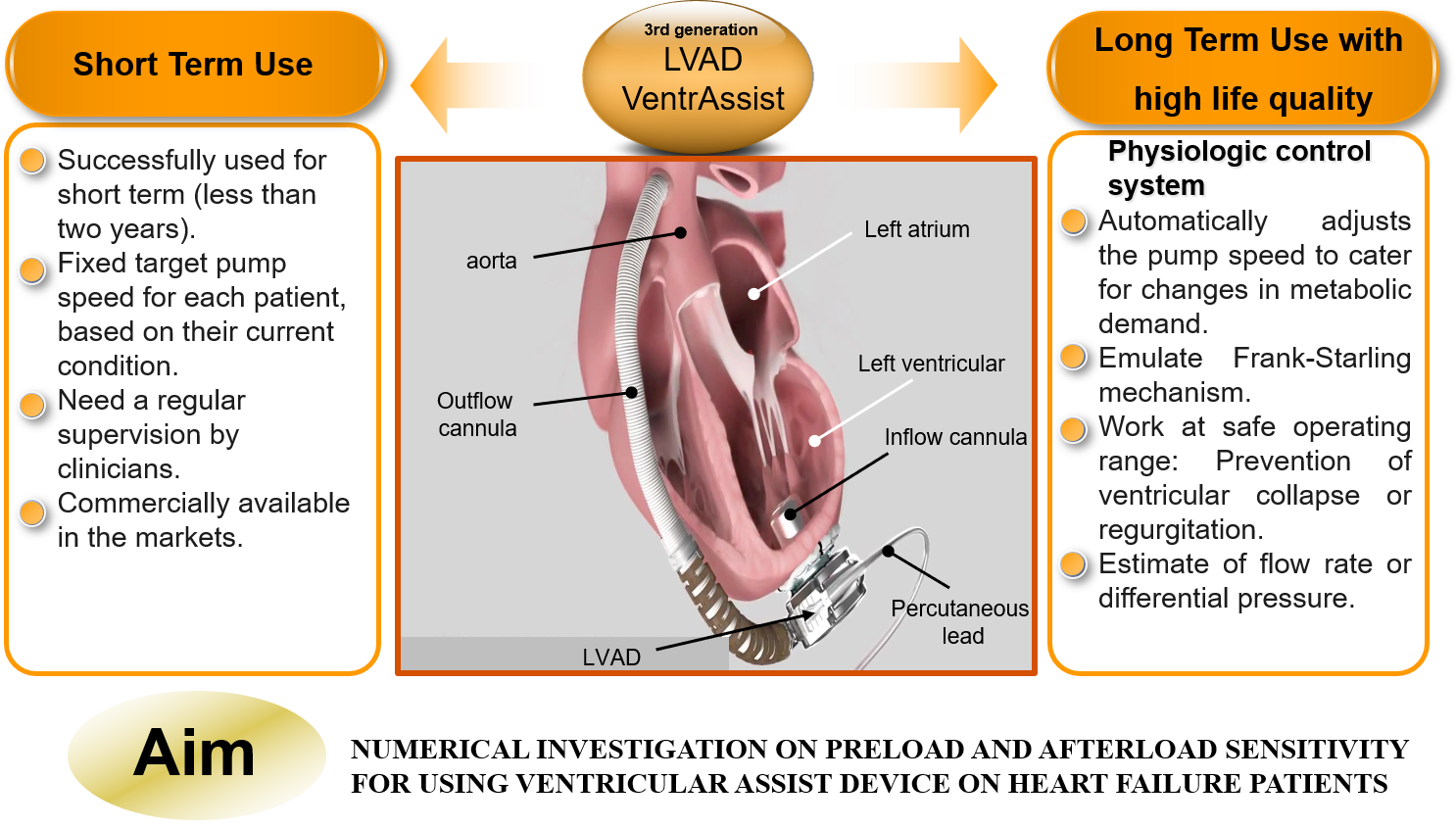
METHODS: A cardiovascular system (CVS) model was used to configure the output of heart failure (HF) status by changing system parameters in one cardiac cycle. LVAD pump was configured to change the fixed rotational speed. In this work, the terms of the pump cannulae model, real-time detection of aortic valve status, left ventricular stroke volume analysis, and LVAD control method was designed and analyzed.
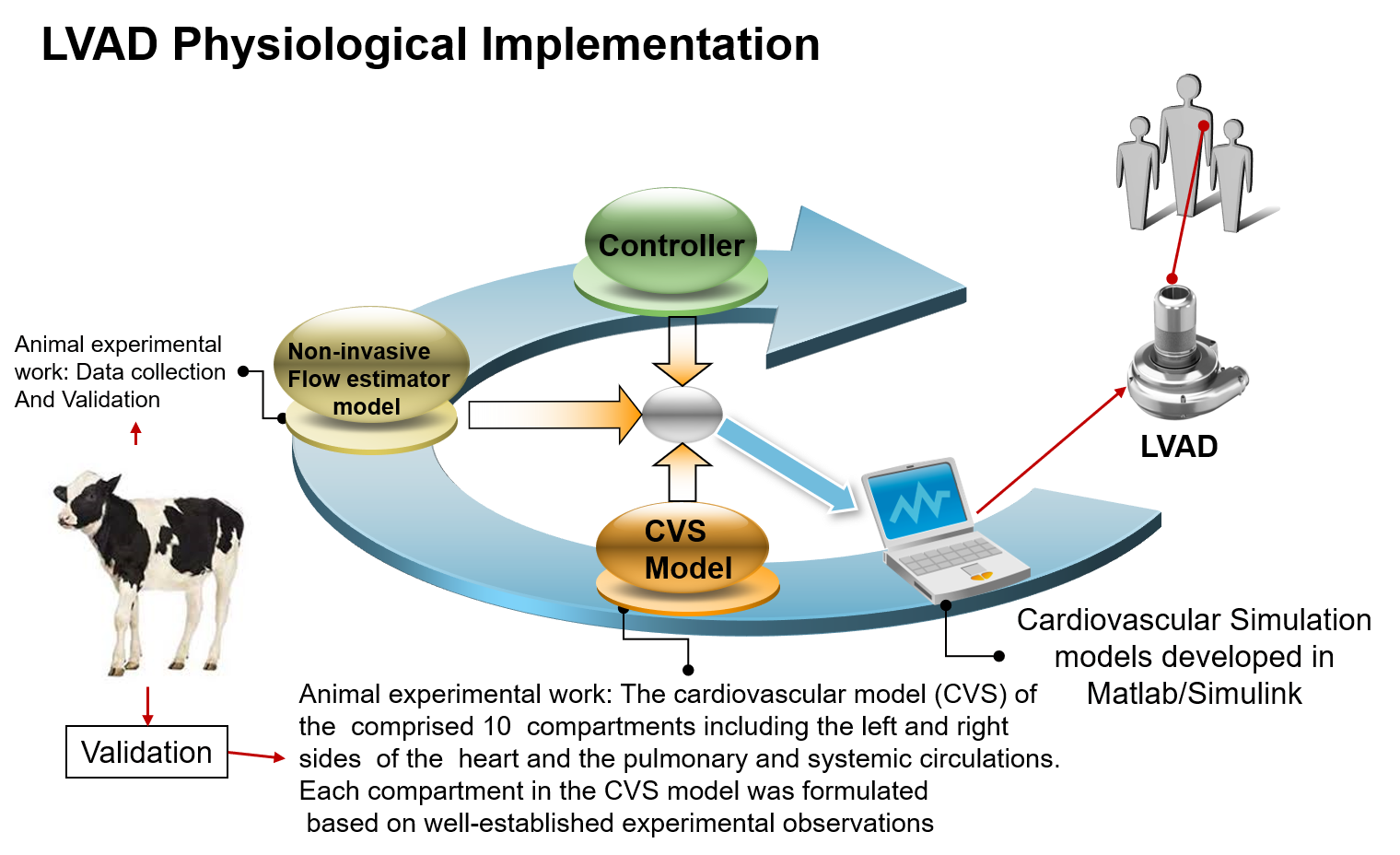
LVAD Control
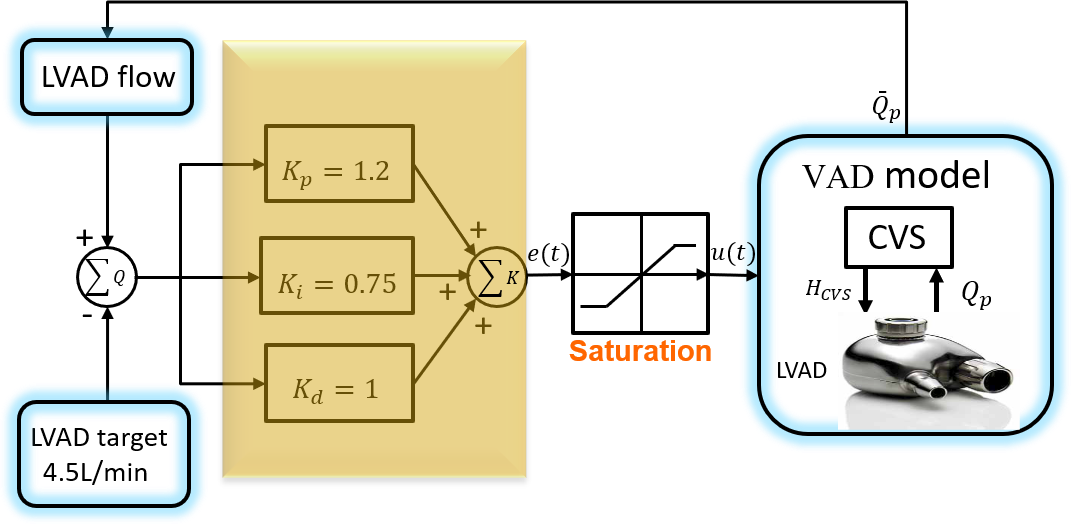
The author extends their appreciation to the Deanship of Scientific Research, Majmaah University for supporting this work.
The Transition between Preload and Afterload
In this scenario, to evaluate the stroke work (SW) of the LV failure associated with an LVAD, the hemodynamic variables of the CVS model were set to configure the heart under the transition from rest to HF condition. The results were witnessed in the three postures of preload, normal, and afterload as shown in Figures 1,2 and 3. It can be observed from the figure 1, the SW was increased with the volume and shifted to left. And the SW located in the middle position in the moderate scenario (Figure 2). Whereas in the case of ‘sever scenario’, it was shifted to the right and decreased the volume as depicted in Figure 3.
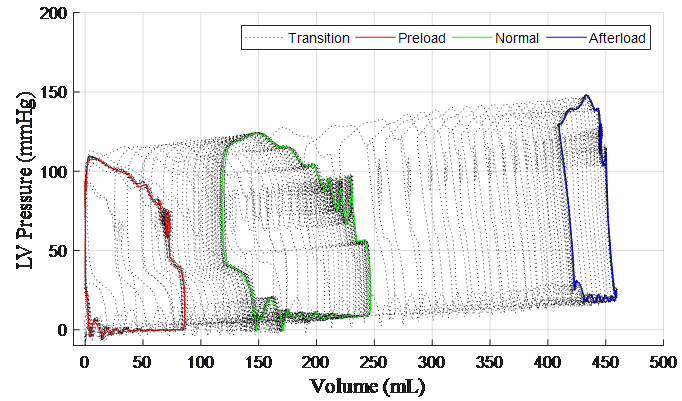
.png)
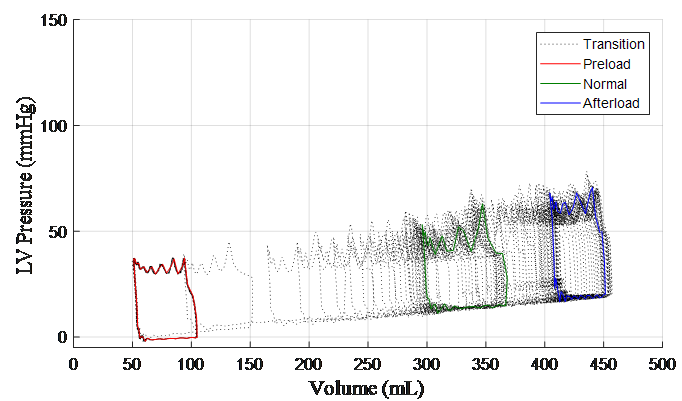
The results demonstrated that the volume of the pump flow changed frequently in diastole, whereas it did not change in systole at varying blood pressures or pump speeds. It means diastole would be more demanding for a high preload sensitivity compared to systole. Also, the PID controller was driving the LVAD in safe operating mode by reducing outflow and thus left ventricular pressure (LVP) to prevent ventricular collapse.
- Stone GW, Lindenfeld J, Abraham WT, Kar S, Lim DS, Mishell JM, Rajagopal V. Transcatheter mitral-valve repair in patients with heart failure. New Engl. J. Med., 2018; 379(24): 2307–2318.
- Sliwa K, Opie LH, Teerlink JR. Acute versus Chronic Heart Failure. Drugs for the Heart. 2019; 6180.
- Heidenreich PA, Albert NM, Allen LA, Bluemke DA, Butler J, Fonarow GC, Nichol G. Forecasting the impact of heart failure in the United States: A policy statement from the American Heart Association. Circulation: Heart Failure, 2013; 6(3): 606–619.
- Krum H, Jelinek M V, Stewart S, Sindone A, Atherton JJ, Hawkes AL. Guidelines for the prevention, detection and management of people with chronic heart failure in Australia 2006. Med. J. Australia, 2006; 185(10): 549–556.
- Slaughter MS, Rogers JG, Milano CA, Russell SD, Conte JV, Feldman D, Wozniak TC. Advanced heart failure treated with continuous flow left ventricular assist device. New Engl. J. Med., 2009; 361(23): 2241–2251.

 Send Email
Send Email